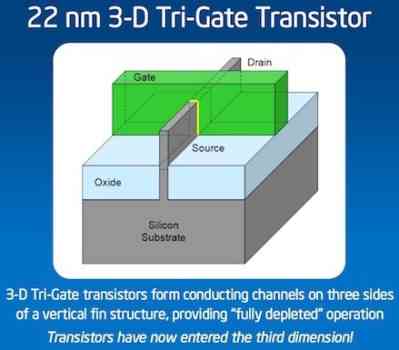The 3D Transistors – A New Era of Computers
Many analysts believe the future of the computer market does not depend on silicon processors and it is replaced by newer technologies such as 3D transistors. Scientists agree with them, and now is actively working in this direction.

According to Professor of American universities Harvard and Purdue, in the near future the 3D transistors having a much more prominent characteristics completely replace silicon . They are based on the elements included in the third and fifth groups of the periodic table. Such a choice is explained by the fact that the elements of these groups provide a very rapid flow of electrons. This discovery moved the scientists on the path to creating new kinds of computer chips that make all the devices based on them would be much more efficient and can boast greater energy efficiency and reduced weight.
Scientists already provide concrete examples of the comparison of three-dimensional transistor on the basis of the elements of III-V (third and fifth groups) with silicon chips.According to them, the 22-nanometer technology , which has already passed the company Intel – it’s almost the limit for silicon, and further the transition to other, more modern standards, in any event require the use of other materials. Intel has so far not commented on the statement, but we know that in its laboratories have tested the chips created on 14-nanometer technology.
Elements of III-V offers a much more modern approach – A 10-nanometer process technology, and this, according to the researchers, their obvious advantage over silicon.Scientists working on all these technologies, one of the secrets revealed: Their new 3D transistors, rather, the nanotube-cutting them, are made of an alloy of indium, gallium and arsenide (InGaAs). By the size of these transistors are much smaller than those used in silicon processors, due to a thin layer of aluminum oxide. This will allow the mounting of more transistors per unit area, plus a smaller size will reduce energy consumption and heat output.
The developers also said that even the current level of technology allows 3D-transistors of indium, gallium arsenide, and so they are confident that the future belonged to them.
Shortlink:

Recent Comments